
How To Weatherproof Christmas Lights and Decorations.
A Brief History of Christmas lights.
The Christmas tree was adopted in homes in 18th-century Germany, where it was occasionally decorated with candles. Since candles were a relatively expensive source of light, Christmas trees were primarily in upper-class homes. Early electric Christmas lights were introduced in the 1880s with the introduction of electricity.
The first known Christmas tree, lit by electric light was created by Edward Johnson. Edward was an associate of Thomas Edison and was the vice president of Edison Electric Light Company. His Christmas tree was wired with 80 red, white, and blue, walnut sized, incandescent bulbs. This electric powered Christmas tree was displayed on December 22, 1882. After being published in a Detroit newspaper, Johnson became known as the Father of Electric Christmas Tree Lights. Since Christmas lights were too expensive for the average person, electric Christmas lights didn't arrive in the majority of households until 1930.
Christmas lights were strictly indoor decorations until 1904 in San Diego, 1909 in Appleton, Wisconsin and 1912 in New York City. These were the first recorded instances of Christmas lights being displayed outside. McAdenville, NC claims to have been the first in 1956. Rain has been a problem ever since.
Enough study! Let's get started!!
WARNING!
Begin by making sure the extension cord or lights are NOT PLUGGED INTO THE OUTLET. Never work with live wires. Always unplug from the outlet before touching or making changes to any outdoor device. Rain Block gaskets and kits MUST be used in conjunction with a properly tested and functioning GFCI outlet.
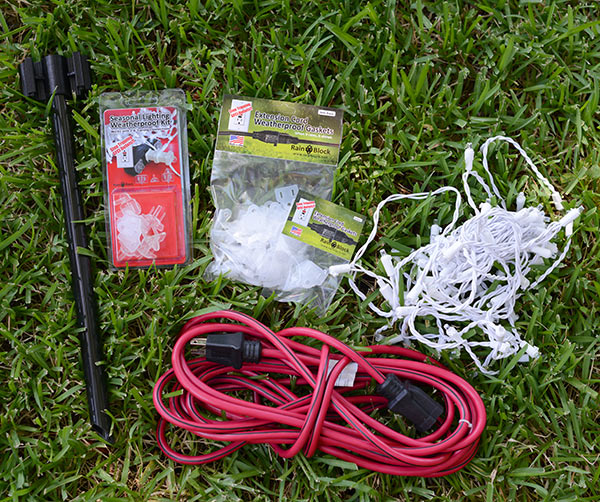
|
Items Needed:1. At least one pack of Rain Block Weatherproof Gaskets 2. At least one pack of Seasonal Lighting Weatherproof Kit. 3. A contractor rated extension cord. Preferably rated for 15 Amps or above. 4. Outdoor rated lights. 5. Stake to hold extension cord in an inverted position. |
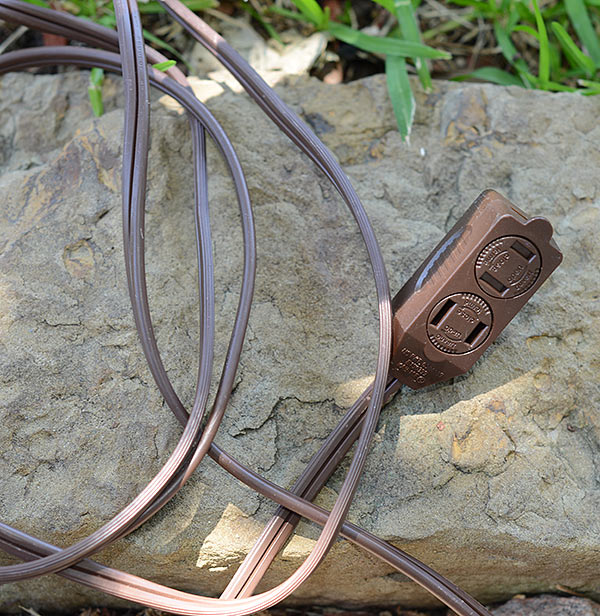
|
The extension cord in this photo will NOT work. There are too many openings in the connector area for moisture to enter. |
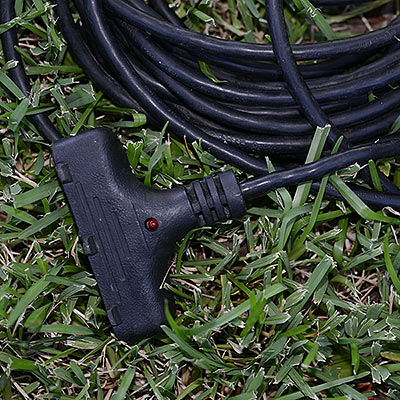
|
Start by selecting the right extension cord for the job. It's best to use contractor rated extension cords such as the one pictured in fig 1. The style pictured above, in fig 2, will NOT work. There are too many openings that will allow water in. Thanks to the Rain Block Seasonal Weatherproof Kit, you can also weatherproof multi-plug cords, similar to the one shown in fig 3. The cord in the photo has an LED that we sealed with regular clear silicone. If your cord has any openings like that it is best to seal it with silicone. It's best to choose cords with no openings. |
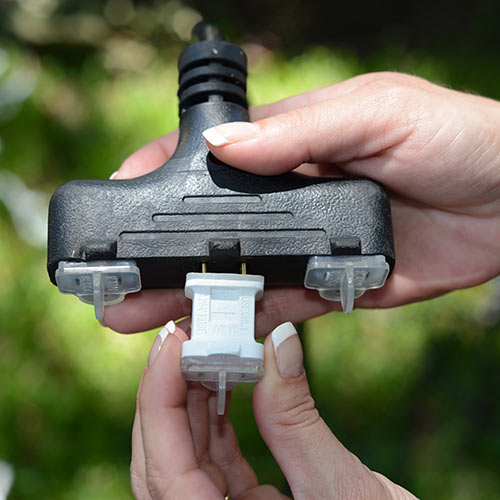
|
Once we have verified that everything is unplugged, we begin at the extension cord. Place a Rain Block Weatherproof Gasket on the male connector of the light or decoration and firmly press the two together. The gasket will compress slightly and lock out water. |
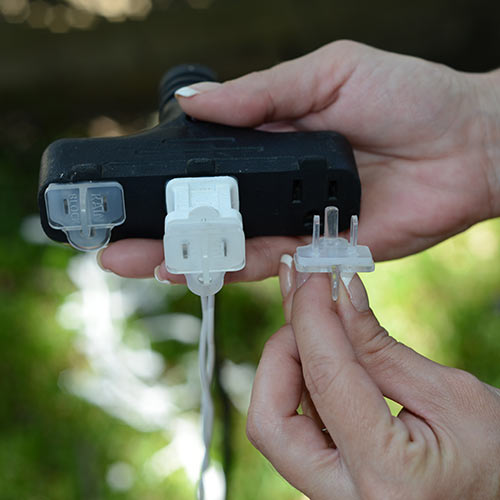
|
If it is a multi-outlet cord, like the one shown, make sure all open female connections are closed by placing a gasket on a Rain Block Termination Plug and firmly pressing it into the open connections. Also seal off the back of the light plug's female connection the same way, unless you plan to plug another string of lights into the open connection. |
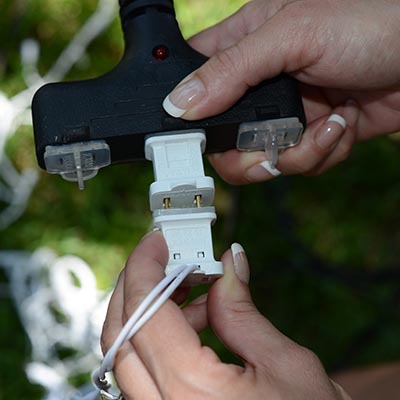
|
You can plug a second string of Christmas lights into the first by applying a gasket to the male plug and firmly press the two together. |
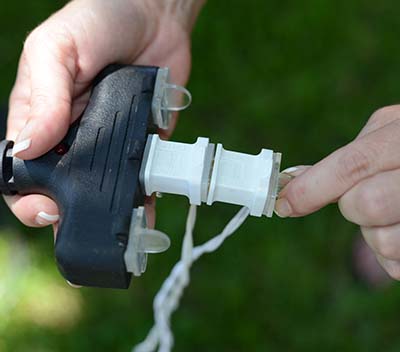
|
Make sure to seal off the back of your Christmas light connection with a gasket and weatherproof plug. |
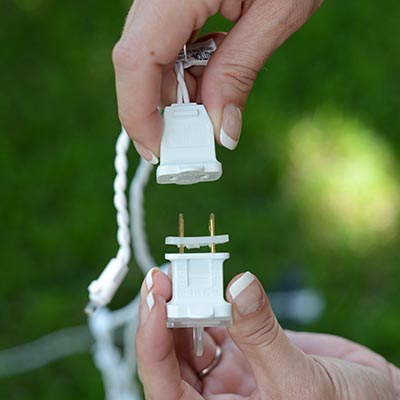
|
From there you can daisy chain multiple Christmas light strands together by applying a gasket to the male connection and firmly pressing it into the end female connector. Don't forget to close off the back with an end plug and gasket. |
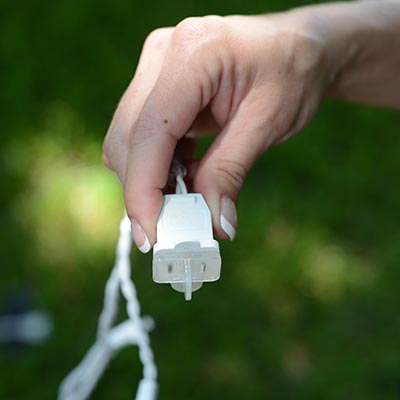
|
Seal off the end of the last light strand by snapping off the third prong of the termination plug, along the score line. Place a gasket on the plug and firmly press it into the female connection. |
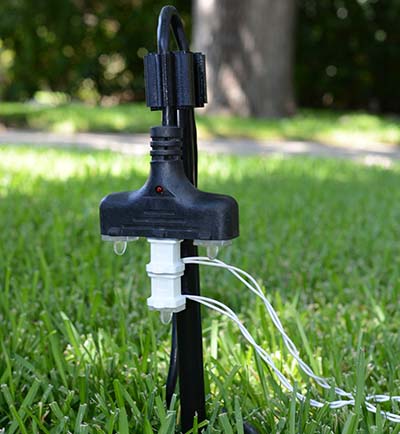
|
It is best if the cord is then placed on a stake above ground and in an upside down position, as shown in fig 4. This position helps keep water dripping off the cord, keeping it from entering the open third ground hole on the cord. That's all there is to it. Weatherproofing Christmas lights is now simple and reliable. |
Other Images


